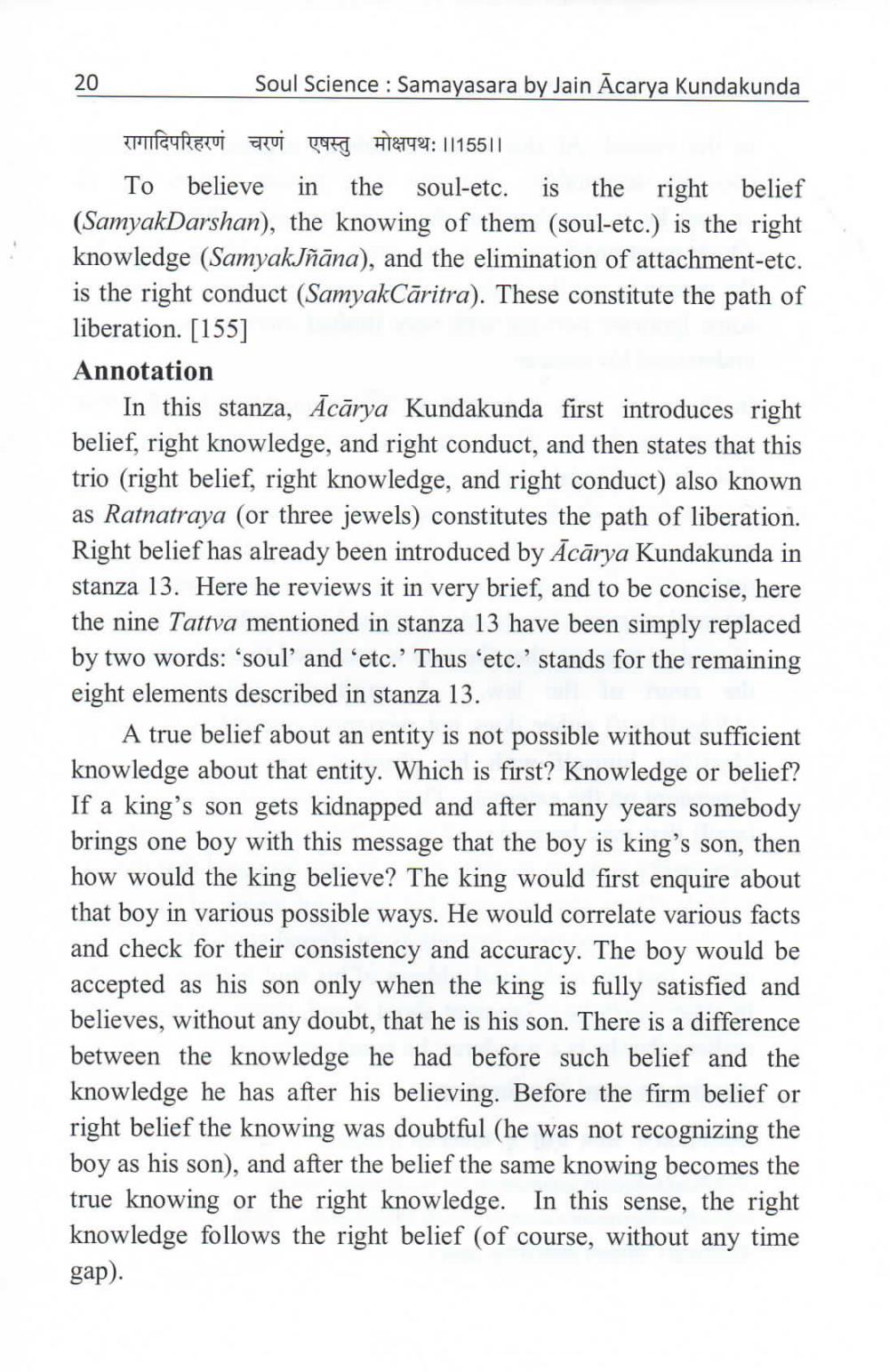________________
20
Soul Science: Samayasara by Jain Acarya Kundakunda
रागादिपरिहरणं चरणं एषस्तु मोक्षपथः ||15511
To believe in the soul-etc. is the right belief (SamyakDarshan), the knowing of them (soul-etc.) is the right knowledge (SamyakJñāna), and the elimination of attachment-etc. is the right conduct (SamyakCaritra). These constitute the path of liberation. [155]
Annotation
In this stanza, Acārya Kundakunda first introduces right belief, right knowledge, and right conduct, and then states that this trio (right belief, right knowledge, and right conduct) also known as Ratnatraya (or three jewels) constitutes the path of liberation. Right belief has already been introduced by Acārya Kundakunda in stanza 13. Here he reviews it in very brief, and to be concise, here the nine Tattva mentioned in stanza 13 have been simply replaced by two words: 'soul' and 'etc.' Thus 'etc.' stands for the remaining eight elements described in stanza 13.
A true belief about an entity is not possible without sufficient knowledge about that entity. Which is first? Knowledge or belief? If a king's son gets kidnapped and after many years somebody brings one boy with this message that the boy is king's son, then how would the king believe? The king would first enquire about that boy in various possible ways. He would correlate various facts and check for their consistency and accuracy. The boy would be accepted as his son only when the king is fully satisfied and believes, without any doubt, that he is his son. There is a difference between the knowledge he had before such belief and the knowledge he has after his believing. Before the firm belief or right belief the knowing was doubtful (he was not recognizing the boy as his son), and after the belief the same knowing becomes the true knowing or the right knowledge. In this sense, the right knowledge follows the right belief (of course, without any time gap).




